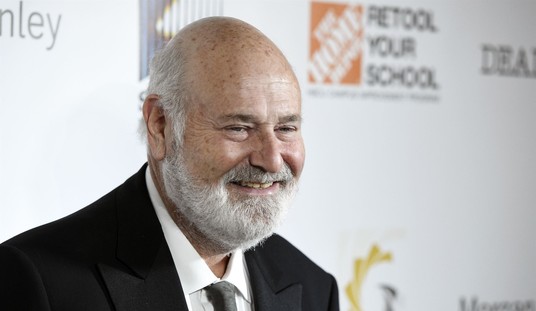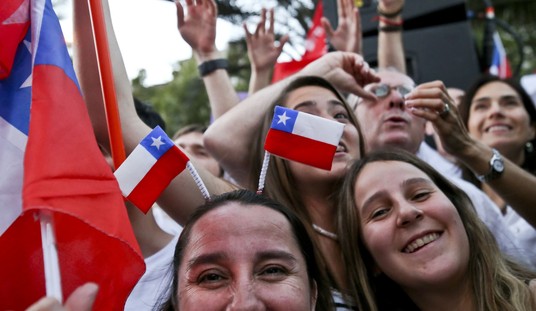“Palestinians never miss an opportunity to miss an opportunity.” — Israeli diplomat Abba Eban
President Donald Trump on Tuesday released the most detailed Israeli-Palestinian peace plan ever. Called “Peace to Prosperity,” Trump’s 181-page vision is the first to feature a map of a proposed two-state solution at the outset, showing the Palestinians what could be theirs, their very own, if they’d just sign on the dotted line.
“Peace to Prosperity” comes with a couple of bitter pills for the Palestinians to swallow: Jerusalem as Israel’s capital, and no “right of return” of Palestinians to Israeli lands. What Palestinians have so far refused to learn, even after decades of war, intifada, and terrorism is: They won’t get Jerusalem or right of return by violent means, either. Those things are off the table, and have been for a very long time.
Trump’s plan also includes a heaping dose of sugar to help the medicine go down, in the form of land swaps and, more importantly, $50 billion in development and infrastructure aid. The development vision includes a tunnel to connect Gaza with the Palestinian West Bank, and an all-new high-tech industrial zone in what is currently Israeli territory on the Egyptian border near Gaza. Trump said the aid would create a million new jobs for Palestinians over the next 10 years and triple Palestine-to-be’s GDP.
Speaking of things the major news outlets can’t, $50 billion is more than enough to allow the Palestinian leadership to skim their usual share, to “wet their beaks” in typical mobster fashion, while still providing for billions and billions to reach the Palestinian “man on the street.” The construction jobs alone would prove to be a huge bonanza. Not bad for a population of just a few million.
Retired U.S. Navy Admiral James G. Stavridis, currently with The Carlyle Group and also a dean at Tufts University’s school for international affairs, told radio host Hugh Hewit yesterday, “This is the best plan the Palestinians are going to get and they should wake up and see that…It is the last exit before the tunnel.”
The Arab world responded by sending three of its American ambassadors to Trump’s unveiling, with pledges of generous support. Israel responded by having both of its rival potential leaders, Bibi Netanyahu and Benny Gantz, sign off on “Peace to Prosperity” in advance. The Palestinians responded by throwing a riot.
The least shocking part, at least to Middle East observers with anything more than zero experience, is that the protest began before Trump’s big unveiling.
The Times of Israel reported that in Gaza City, protesters burned pictures of Trump and Netanyahu, and raised a banner reading “Palestine is not for sale.” Conveniently for the TV cameras — news crews were notified in advance of the totally spontaneous and organic protest — the professionally pre-printed banners were blazoned with text in both Arabic and English. The Times’ staff also noted that “the Hamas terror group, which rules the Gaza Strip, expressed rare support for Palestinian Authority President Mahmoud Abbas of the rival Fatah movement, welcoming his call for a broad meeting of Palestinian factions.” So Trump seems to have brought at least a semblance of unity to the long-divided Palestinian leadership. Maybe not in the way one would have hoped, but certainly in the way one expected.
How authentic is Palestinian rejectionism, if we look beyond the well-heeled Fatah and Hamas leadership? For starters, you’re nobody in the Middle East if you can’t get a couple thousand of your people out in the street to chant “Death to America and/or Israel!” at your convenience. And Hamas chief Ismail Haniya and Fatah Chairman Mahmoud Abbas, sadly, ain’t exactly nobody. Yesterday’s protest might have been de rigueur, but unfortunately, that doesn’t necessarily mean they weren’t also genuine.
This is a foreign concept to perhaps most Americans, but in some places, the idea of neverending struggle actually sells. We Americans tend to get sick of even wars we’re winning before they’re over. But the exact opposite has been the case in parts of the Arab World going back at least to Israel’s founding in 1947. The more practical Arab governments, namely in Egypt and the Saudi-led Gulf states, finally wised up and saw Israel as a practical (if often unacknowledged) ally against the real threat emanating from Tehran. Also, those are actual nations with real armies, who were probably tired of having their rear ends handed to them by the Israeli Defense Force.
But in the West Bank and Gaza, no offer of statehood, no offer of financial support, is apparently generous enough to bribe the people there into desiring an end to occupation on the Israeli’s part, and war and terrorism on theirs. “The struggle is real,” I suppose, to the detriment of literally everything else.
I can understand the Palestinian leadership’s unwillingness to give up on a struggle that has lined their pockets for generations. But my American mind cannot grasp what by most accounts is the unending appeal of neverending war to so many Palestinians. Trump himself admitted reservations, saying on Tuesday, “I think in the end they’re going to want it. It’s very good for them. In fact, it’s overly good to them. So we’ll see what happens.”
Maybe a combination of pressure-plus-dollars from the Gulf States and Trump’s almost irresistible salesmanship can move Palestinian opinion in favor of taking that “last exit before the tunnel.” Or maybe they’ll take this one last opportunity to miss their one last opportunity.










